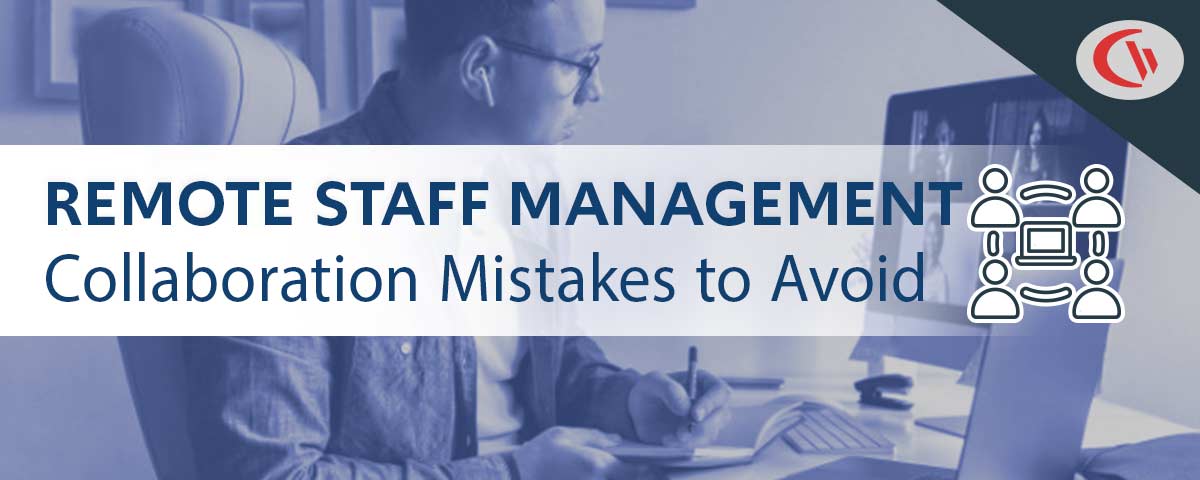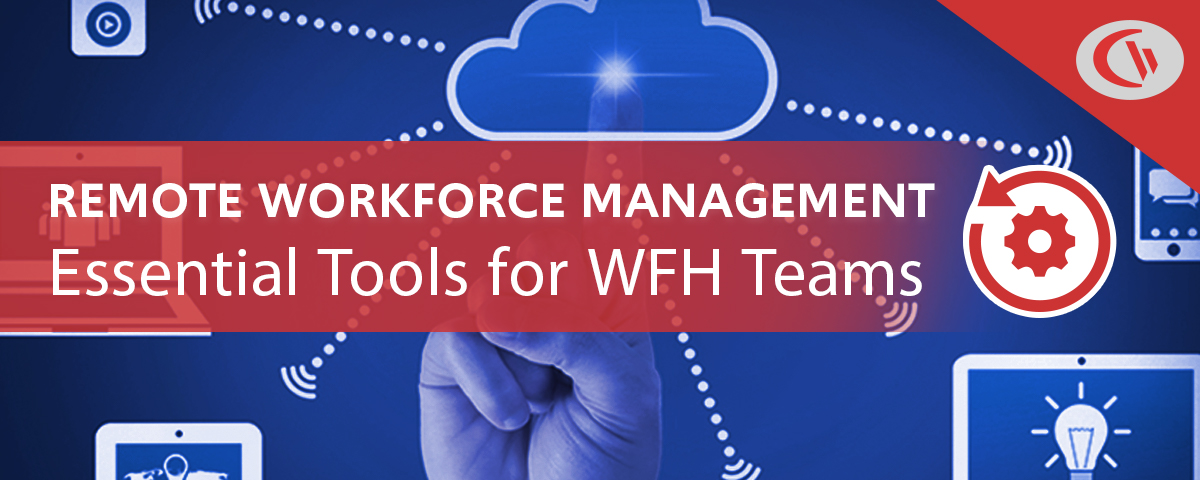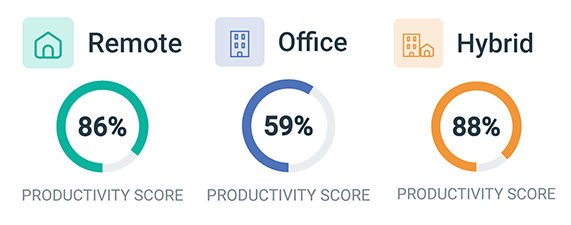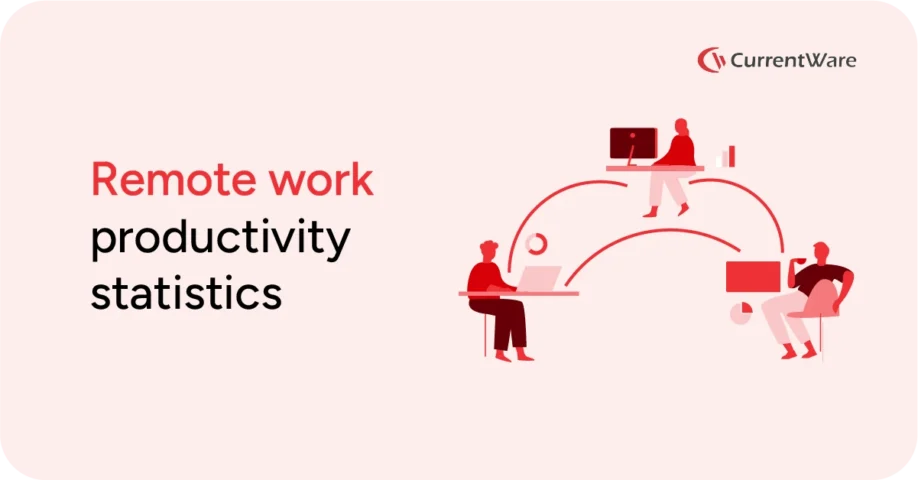Collaboration Mistakes To Avoid When Managing Remote Teams

In today’s globalized world, remote teams are more prevalent than ever. While this flexibility offers a multitude of benefits, fostering effective collaboration across geographical distances can be a challenge. To keep your remote team firing on all cylinders, it’s crucial to avoid common pitfalls that can hinder communication and teamwork. This blog will guide you through the key collaboration mistakes to steer clear of, equipping you to set up your remote teams for success.
How to Manage Remote Employee Productivity
Managing a remote workforce comes with unique challenges. In this video, CurrentWare’s CEO Neel Lukka shares his top tips for managing the productivity of employees that work from home.
Collaboration Mistakes to Avoid
Misaligned Expectations and Strategies
Planning is crucial to all organizational processes. The procedure helps you to clarify expectations and derive strategies to meet them.
But it’s not uncommon for team members to misunderstand or outrightly fail to grasp the expectations and strategies for a project. That sometimes happens due to inattentiveness during meetings or misrepresentation of opinions and ideas from the leader.
Regardless, as a leader, you must prevent this error by ensuring all your remote team members are on the same page. An excellent way to do this is by using a feedback system to get opinions from the team and gauge their understanding of the strategies and expectations.
Without face-to-face interaction, misunderstandings can arise. Clearly define project goals, roles, and deadlines. Encourage open communication to clarify any ambiguities.
Neglecting Team Interaction & Team Building
Remote workers often unintentionally ignore team interactions due to their isolation from the team. Plus, there’s hardly much room for social exchanges and group discussions among team members. Everyone focuses on their tasks and only exchanges information when necessary.
But this creates a problem wherein you’ll hardly know anything about your team members outside of their responsibilities. Plus, it’s also easy to overlook group conversions or delay responding to them.
As such, you must implement measures to help remote workers interact and integrate well as they would in a physical workspace. For instance, an employee handbook is one example of HR documents that ensure great company culture. It helps every remote team member understand what is expected of them, thereby nurturing camaraderie and teamwork among remote team members.
Remote teams need to feel connected. Schedule virtual team-building activities, encourage informal chats, and recognize individual and team achievements.
Not Creating a Space for Conversation
Without the watercooler chats and hallway interactions of a physical office, remote teams can feel siloed. Ensure regular check-ins, encourage information sharing, and use a variety of communication channels.
A remote work setting hampers such interactions between employees by eliminating the circumstances that encourage it. The best way to counter this issue is to establish a conversation space for the team.
A common collaboration mistake leaders make here is leaving team integration to chance. They often think it’s not their responsibility and leave the members to interact as they deem fit.
You must avoid that mistake, which means taking it upon yourself to incite and nurture team integration. An excellent way to do this is by creating informal communication channels on slack or discord and scheduling casual calls with the team.
Not Using The Right Tools
Remote work gained wide acceptance thanks to several technological innovations. Nowadays, developers are consistently creating and improving tools that foster remote team collaborations.
But these developments come with a caveat for leaders; you may find it challenging to identify the right tools to use, and it’s essential to minimize tool fatigue by not overwhelming your team with too many tools. Often, you may end up choosing the wrong ones.
The easiest way to avoid this mistake is to engage your team in the tool selection process. Create a shortlist of appropriate tools for your team and encourage members to pick the ones they prefer. That way you’ll select only the options your team members are comfortable with.
Micromanaging Remote Teams
Remote employees thrive with autonomy. Focus on setting clear goals and expectations, and provide support without hovering over every task.
That said, you need to strike a balance between flexibility and accountability. To gain productivity insights without constant check-ins, consider remote employee productivity monitoring software.
Rushing Through Online Meetings
Teams tend to spend more time in physical meetings than in virtual discussions. Physical meetings are naturally more interactive as people contribute in real-time verbally and with visual cues.
Virtual meetings on the other hand tend to be less interactive with participants often being more passive. In most cases, this results in participants speeding up discussions to quickly round up the meetings.
This mistake may have serious repercussions on collaborations as team members may fail to discuss the details of an assignment properly. Though, you shouldn’t unnecessarily prolong discussions. Instead, ensure the team exhaustively deliberates on all matters before adjourning the meeting.
That said, excessive meetings can eat into productivity. Conduct meetings only when necessary, have clear agendas, and encourage active participation from all team members.
Ignoring Time Zones When Scheduling a Meeting
A perk of the remote work model is it gives you the flexibility to have employees anywhere in the world. But that may also mean having employees working from different environments, conditions and time zones. But it’s easy to forget these factors when scheduling a meeting with your remote team.
While it often happens as an honest collaboration mistake, it may come off as inconsiderate to schedule meetings at uncomfortable times for employees. You must always consider the timezone difference when scheduling meetings and assigning tasks to team members.
Being cognizant of these factors shows that you care enough about your team and want to make their jobs easier. Try to assign tasks and schedule meetings for a time that works well for all the parties involved.
Tools that enable great remote collaboration

Want to develop a productive, secure, and fulfilled remote team? Effectively managing remote employees requires a careful mix of tech, communication, and practices.
To make the most of your remote workforce you need to utilize project management platforms, video conferencing tools, and instant messaging apps to keep everyone on the same page. These essential tools will provide your team with the capabilities they need to thrive when working remotely.
Further Reading: Best Tools for Managing a Remote Team
Improve Productivity & Security With CurrentWare
Take back control over productivity and security with CurrentWare’s cybersecurity, web filtering, data loss prevention, and user activity monitoring solutions. Reach out to us today to book a custom demo, or download the free trial to get started right away.
Conclusion
Managing a remote team can be challenging for even the most experienced managers. To keep your team motivated and efficient, you must adjust your management style and avoid the following collaboration mistakes.
Regardless of your management experiences, you’re never above an honest mistake now and then. But that doesn’t make them any less unpleasant. As such, you must consistently try to identify impending issues and take measures to prevent them.
About the Author
Yauhen Zaremba
Yauhen is the Director of Demand Generation at PandaDoc, an all-in-one document management tool for almost all types of documents including this PandaDoc debt settlement agreement template and Cooperative Agreement Template. He’s been a marketer for 10+ years, and for the last five years, he’s been entirely focused on the electronic signature, proposal, and document management markets. Yauhen has experience speaking at niche conferences where he enjoys sharing his expertise with other curious marketers. And in his spare time, he is an avid fisherman and takes nearly 20 fishing trips every year.

